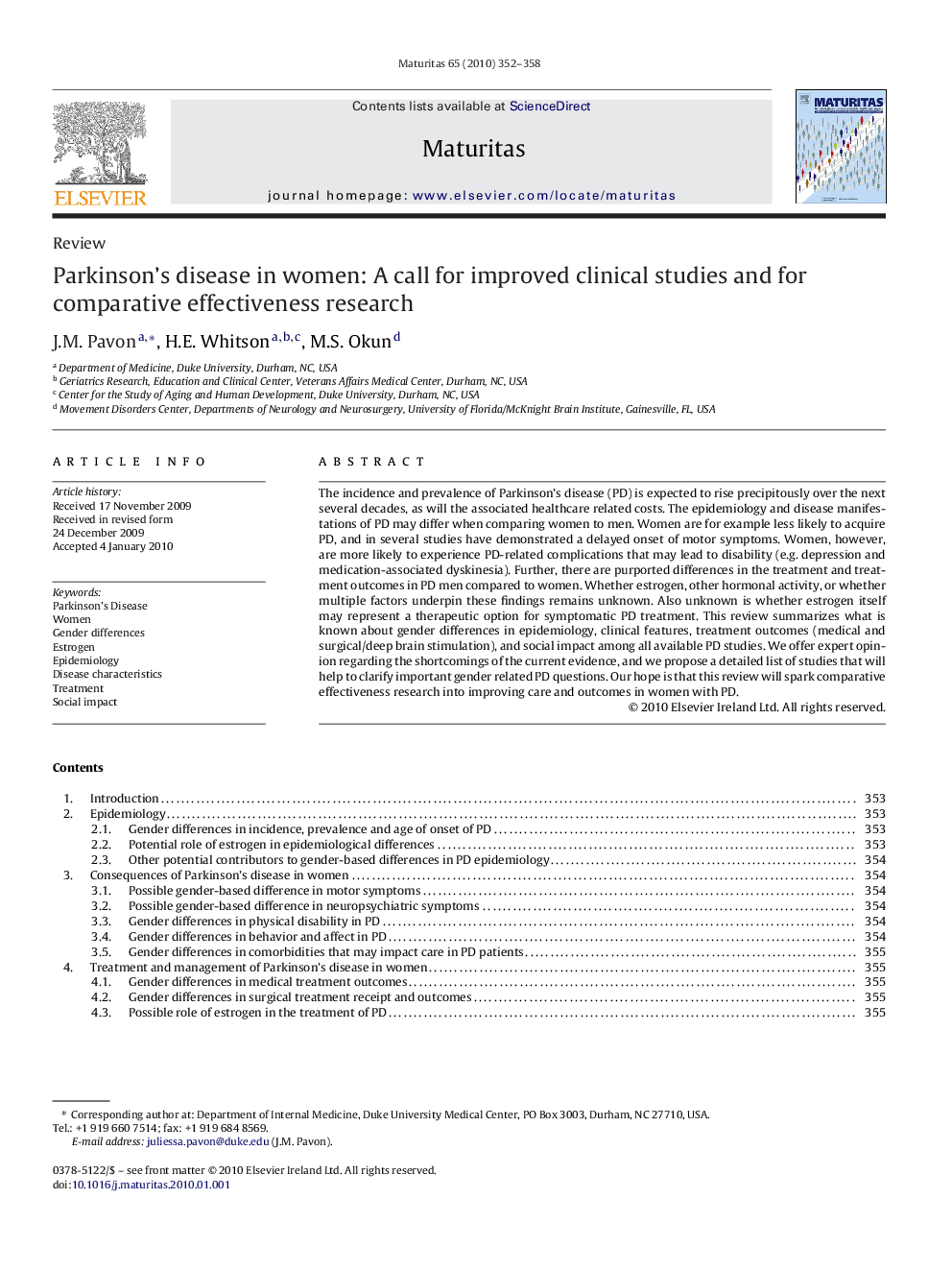| Article ID | Journal | Published Year | Pages | File Type |
|---|---|---|---|---|
| 1918015 | Maturitas | 2010 | 7 Pages |
The incidence and prevalence of Parkinson's disease (PD) is expected to rise precipitously over the next several decades, as will the associated healthcare related costs. The epidemiology and disease manifestations of PD may differ when comparing women to men. Women are for example less likely to acquire PD, and in several studies have demonstrated a delayed onset of motor symptoms. Women, however, are more likely to experience PD-related complications that may lead to disability (e.g. depression and medication-associated dyskinesia). Further, there are purported differences in the treatment and treatment outcomes in PD men compared to women. Whether estrogen, other hormonal activity, or whether multiple factors underpin these findings remains unknown. Also unknown is whether estrogen itself may represent a therapeutic option for symptomatic PD treatment. This review summarizes what is known about gender differences in epidemiology, clinical features, treatment outcomes (medical and surgical/deep brain stimulation), and social impact among all available PD studies. We offer expert opinion regarding the shortcomings of the current evidence, and we propose a detailed list of studies that will help to clarify important gender related PD questions. Our hope is that this review will spark comparative effectiveness research into improving care and outcomes in women with PD.
